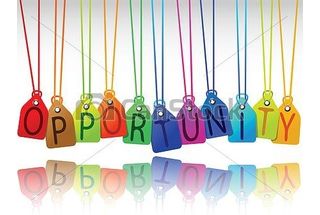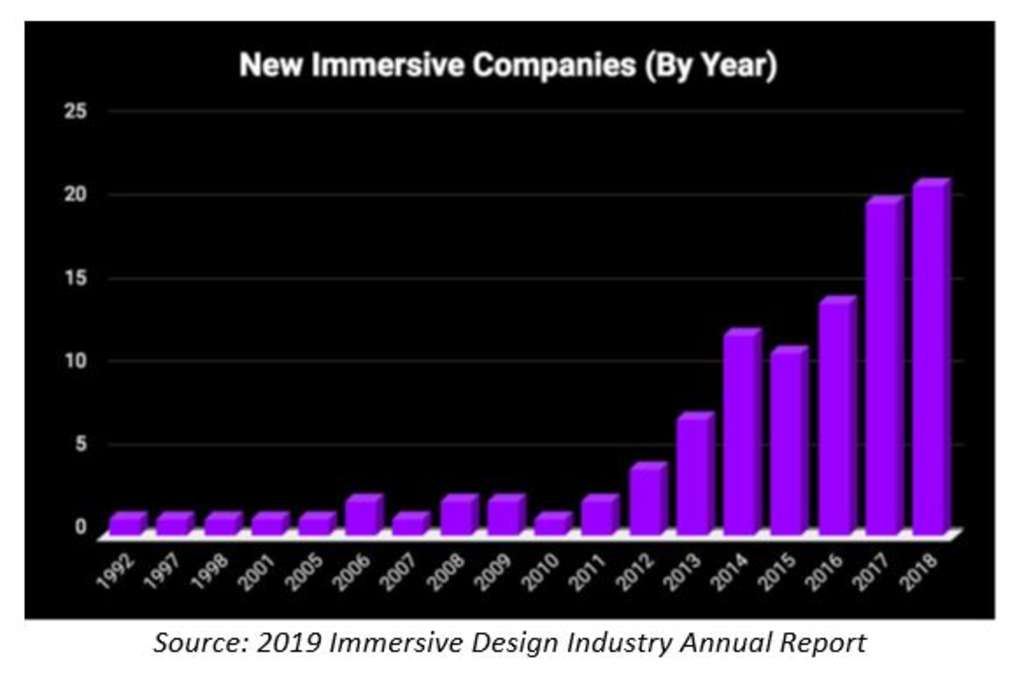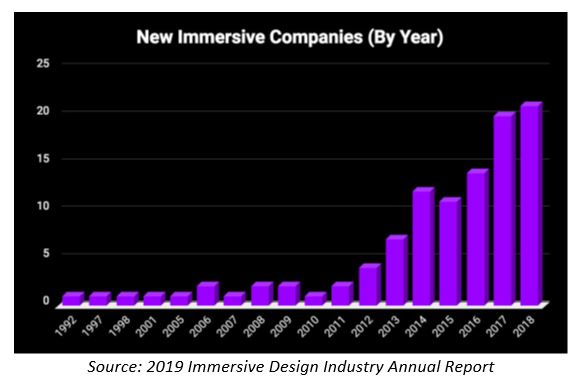Immersive Entertainment A New Opportunity For Hotels

In the span of only a few years, the immersive entertainment concept has taken much of the attractions world by storm. A relatively new phenomenon, it has quickly moved into the mainstream, covering everything from immersive art installations and virtual reality to escape rooms and fully-themed immersive parks.
What connects all of these experiences is the illusionary environment that surrounds and envelopes their audiences, allowing them to become an essential part of the overall entertainment. This phenomenon has implications for the hospitality industry as guest experiences continue to drive demand and savvy consumers expect more for their travel and leisure dollars.
The "2019 Immersive Design Industry Annual Report," prepared for the 2019 Immersive Design Summit, is the first report of its kind to summarize the state of this growing industry. According to the authors, the immersive entertainment industry was valued at more than $4.5 billion in 2018 (which excludes the $45.2 billion theme park industry), and more than 700 new or updated immersive experiences were catalogued in North America for the year.
Sub-industries and their key players
The immersive entertainment industry encompasses not only a wide variety of disciplines but also many sub-industries. The sub-industries, their impact on immersive entertainment, and key players are described below:
Interactive art museums: Also referred to as interactive art installations, they redefined the "museum" concept by offering cutting-edge exhibits that use digital components, virtual reality, sound and more to immerse their visitors in holistic art experiences. Two companies in particular have led this category with new, innovative business concepts and models that have skyrocketed to instant success.
- Meow Wolf: Santa Fe, New Mexico's House of Eternal Return debuted in March 2016. The 28,000-square-foot space, designed by over 100 artists, features a multidimensional mystery house with secret passages, portals to magical worlds, climbing apparatus and mesmerizing art exhibits along with a children's learning center, a café and bar as well as a music venue. It grossed $6.8 million in revenue and welcomed 400,000 visitors in its first year, according to published reports. In 2019, Meow Wolf's artist-driven dark ride, Kaleidoscape, opened at Elitch Gardens in Denver, where a new art installation venue is being built. Expansion plans include new permanent locations in Las Vegas, Phoenix and Washington, D.C. The Phoenix location will include an attached Meow Wolf themed hotel.
- Museum of Ice Cream: Featuring ice cream- and candy-themed exhibits, this pop-up art museum has risen to cult status on Instagram for its photo-worthy backdrops. Since its first exhibit opening in 2016, the MoIC has earned an estimated $20 million across its New York, Los Angeles, San Francisco and Miami Beach locations, with more than 500,000 visitors. Recently, the Museum of Ice Cream announced it will open a permanent location in New York this fall. The 25,000-square-foot, three-story building at 558 Broadway will feature 13 installations, including one called "Celestial Subway," its signature sprinkle pool and a "Queen Bee hive."
Themed entertainment industry: Within the themed entertainment industry, there has been a noticeable shift toward design methodologies that focus on viewing audiences as active participants rather than passive observers. Environments have become more complex in both detail and design, combining unique, story-driven elements with advanced technology to fully immerse visitors into the theme's narrative.
- Disneyland Resort & Walt Disney World Resort: The new Star Wars: Galaxy's Edge themed areas in Anaheim and Orlando, opened in 2019, are fully-immersive, surrounding visitors with the sights, smells, sound and populace of the Star Wars Universe.
- Evermore: Located in Pleasant Grove, Utah, Evermore opened in 2018 as a new breed of theme park. It has no rides and instead focuses on immersive, interactive storytelling with actors and detailed settings.
- Knott's Berry Farm: Opened in 2016, Ghost Town Alive! is a story-filled, role-playing experience that thrusts guests into the historic world of the Wild West.
Virtual reality and augmented reality: Virtual reality and augmented reality industry (together XR) are a global industry, divided into location-based entertainment (LBE) and home device markets. In 2018, the VR LBE market was valued at $1.2 billion and the XR home device market was valued at $1.8 billion, a combined $3 billion market. Today, the hospitality industry is embracing these technologies and incorporating them into guest experiences that range from VR travel experiences and hotel tours, to interactive hotel rooms and customized AR games.
Haunted attractions: Growing at an impressive rate, this industry was valued at more than $1 billion dollars in 2017, up from $300 million in 2013. Traditional walk-through haunted houses have branched out to include more interactive content that focuses on audiences as integral parts of the experience. The industry association America Haunts estimates there are 1,200 professional haunted house attractions, 300 theme parks that operate horror themed events, and over 3,000 charity run spook shows.
Escape rooms: Escape rooms continue to drive growth in the immersive entertainment industry with more than 2,300 individual businesses across the United States, up from only 22 in 2014. Escape rooms bring together groups of people to solve puzzles, open locks, and interpret clues in order to complete the mission and "break out" within a specific time frame. With the average escape room business generating $256,860 in revenue per location each year according to the 2019 Immersive Design Industry Annual Report. U.S. escape rooms form a $513.7 million industry. The average industry pricing per player is $26.50 and per team is $190.
Immersive theater: This type of intimate, personal entertainment, characterized by interaction between performers and audience members, has become increasingly popular in recent years. Punchdrunk's "Sleep No More" continues to be the longest continuously running immersive theater production in the United States. In 2017, it earned $4.9 million in revenue from ticket sales, food, beverage, and merchandise.
Experiential marketing activities: Experiential marketing focuses on helping consumers experience a brand with the goal of evoking an emotion or reaction that is memorable for the consumer. The value for marketers lies in the potential to make a connection with customers, build brand loyalty, and inspire word-of-mouth promotion. Equally important, brand loyalists have the ability to influence other people's buying behavior.
Bar and restaurant industry: The bar and restaurant industry has exploded with immersive dining and drinking experiences that include themed establishments and limited-run pop-ups. Whether its dining in the dark, engaging with "dinnertainment," posing as a double agent at a spy-themed restaurant, or sipping on holiday-themed cocktails at a pop-up bar, consumers are looking for experiences that can't be found anywhere else.
Pricing, growth and attendance
Authors of the "2019 Immersive Design Industry Annual Report" also conducted a benchmark survey to help quantify the impact of the industry and catalog its growth.
Regarding the average price per attendee, responses indicated that prices for immersive events and products vary widely, with 80% of total reported pricing for 2018 falling under the $100 price point. The $25-$49 range, which comprised 28% of the reported pricing information, appears to be the pricing "sweet spot."
Since 2015, there has been significant growth in the number of companies creating immersive works, as suggested by the following graph from the report. In fact, more than 40% of immersive companies surveyed were founded in 2017 and 2018.
In 2018, three-quarters of immersive entertainment companies reported annual attendance figures at less than 10,000. This finding supports the belief that most immersive works are designed for smaller audiences seeking personal, intimate experiences.
The appetite for authentic, experiential entertainment will drive growth in this industry and will continue to impact more traditional hospitality properties like hotels. Big names such as Disney are already leading the way, but immersive entertainment as a concept has implications for more traditional hotel properties as well. The ability of these concepts and technologies to be incorporated into virtually any setting gives properties the opportunity to create fun, memorable and unique experience for guests. Partnering with or incorporating these immersive entertainment spaces into the property may help hotels diversify their offerings and stand out among their competitors.
Conclusion
Immersive entertainment development will continue to see strong growth in larger metro markets in the United States and abroad. Meow Wolf's planned openings in Las Vegas in 2020 and Denver in 2021 will raise the bar on new immersive developments as they will be larger than the existing Meow Wolf Santa Fe facility and incorporate the latest hybrid of technology and art.
The years ahead will bring strong growth as more investors analyze the financial feasibility of the industry and more artists look to collaborate on new projects, including those within hotels and resorts. Immersive experiences will continue to grow and evolve, as the industry itself develops from the infancy stage. As always, H&LA continues to stay abreast of all the new additions and changes happening in the hotel and amusement industries.
The author wishes to acknowledge Joan Deegan and Heidi Banak for their assistance with the article.
* This article was originally published by Hotel News Now.

